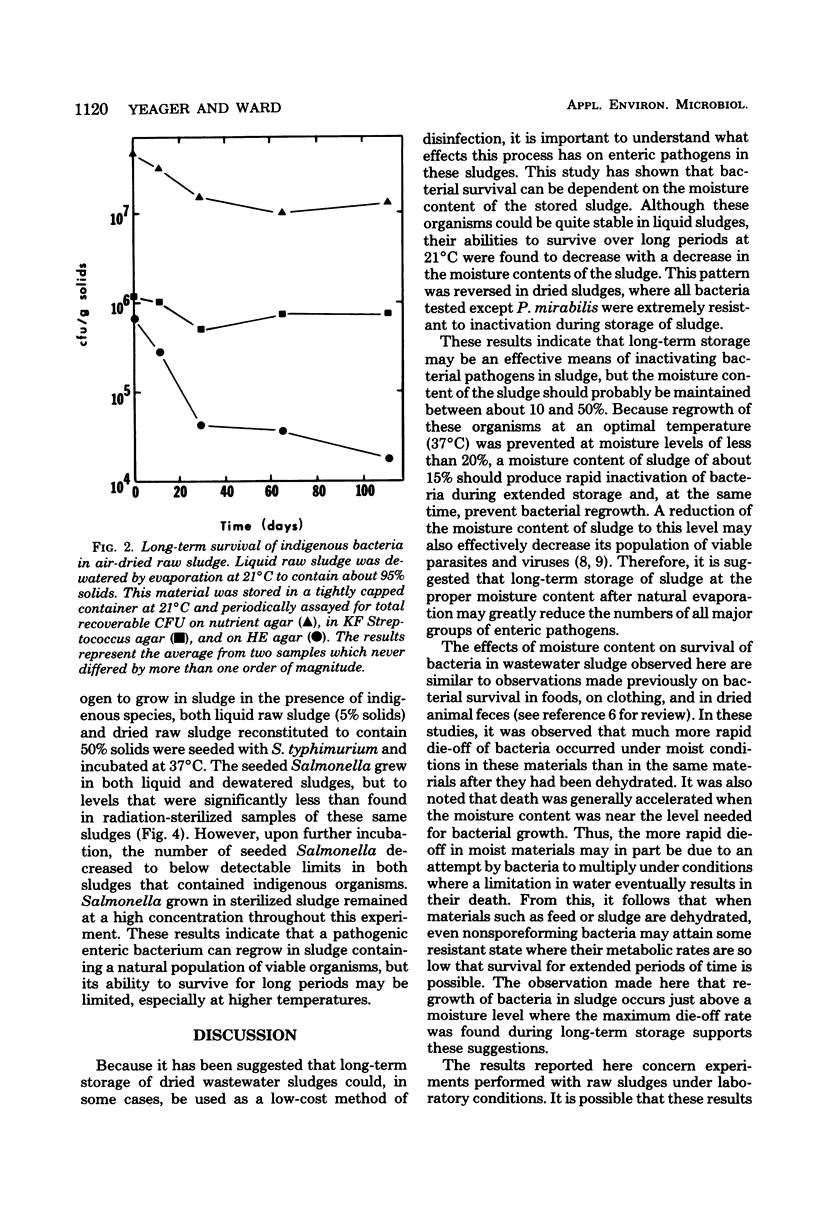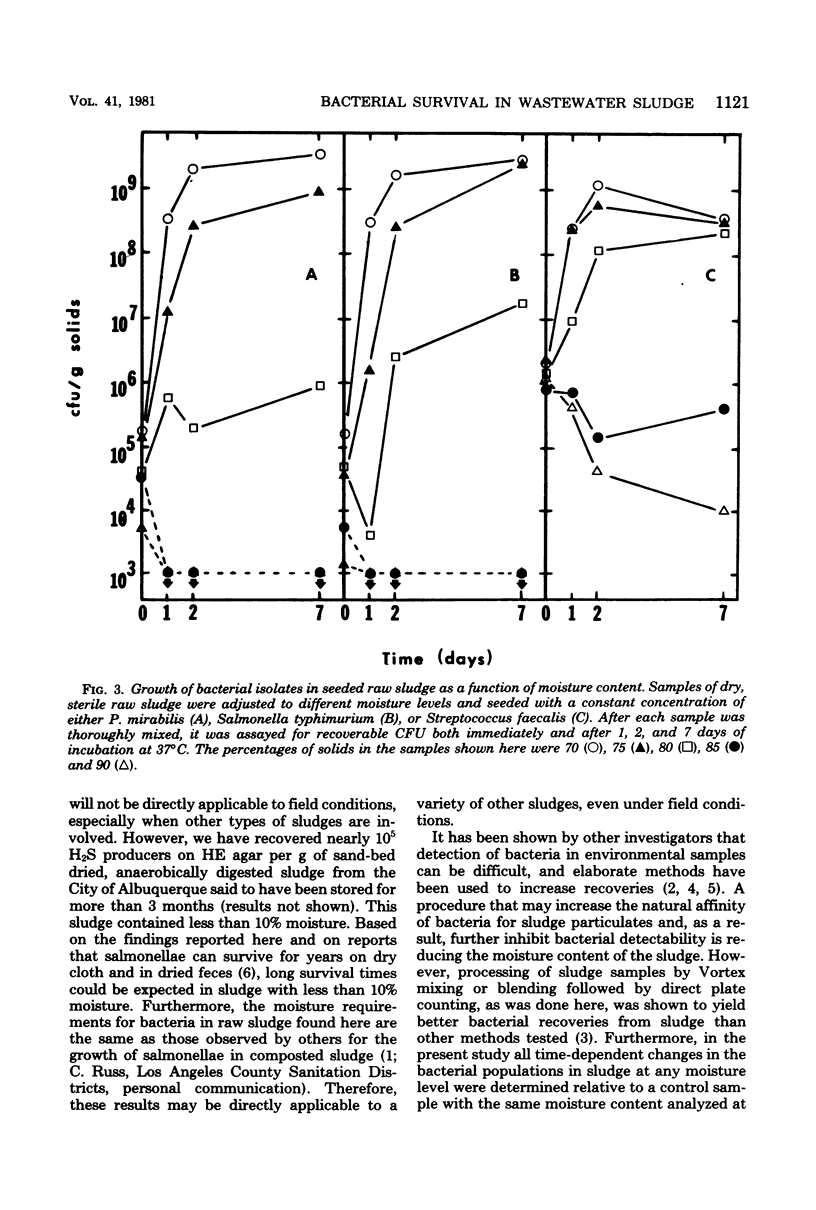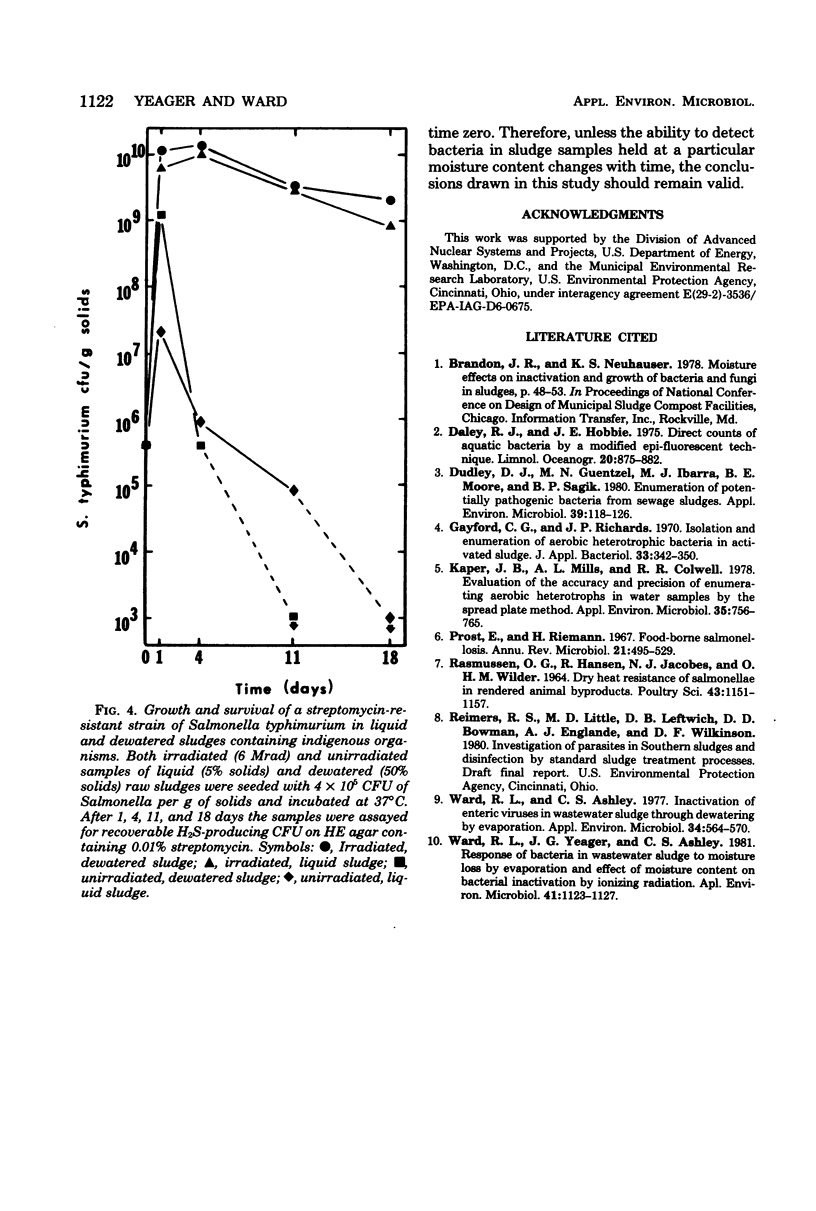Abstract
The effects of moisture content on the survival and regrowth of seeded and indigenous enteric bacteria in raw sludge were determined. Cultures of six strains of fecally associated bacteria grown in sterilized, liquid sludge (5% solids) were all quite stable at this moisture level for over 90 days at 21 degrees C. When the moisture content of the sludge containing these organisms was reduced by evaporation and the samples were stored at 21 degrees C for extended periods, bacterial inactivation rates were generally proportional to the moisture losses of the samples. A dramatic reversal in this effect was observed in samples containing more than 90% solids. In this dried sludge, every bacterial species studied except Proteus mirabilis was found to be extremely stable. Bacteria indigenous to sludge were also found to survive for long periods in dried sludge. Regrowth of bacterial isolates in sterilized raw sludge was found to occur readily at 37 degrees C in samples containing less than or equal to 75% solids, but no growth was observed in samples with greater than or equal to 85% solids. Some growth, but to less than saturation densities, occurred with 80% solids. Growth of seeded Salmonella typhimurium was also found to occur in the presence of indigenous organisms in both liquid and dewatered raw sludges. However, the population density attained was well below that found in sterilized samples of the same sludges. In addition, the number of salmonellae dropped below detectable limits within a few days in sludges containing viable indigenous organisms, whereas little decrease occurred during this time with salmonellae grown in previously sterilized sludges.
Full text
PDF





Selected References
These references are in PubMed. This may not be the complete list of references from this article.
- Dudley D. J., Guentzel M. N., Ibarra M. J., Moore B. E., Sagik B. P. Enumeration of potentially pathogenic bacteria from sewage sludges. Appl Environ Microbiol. 1980 Jan;39(1):118–126. doi: 10.1128/aem.39.1.118-126.1980. [DOI] [PMC free article] [PubMed] [Google Scholar]
- Gayford C. G., Richards J. P. Isolation and enumeration of aerobic heterotrophic bacteria in activated sludge. J Appl Bacteriol. 1970 Jun;33(2):342–350. doi: 10.1111/j.1365-2672.1970.tb02205.x. [DOI] [PubMed] [Google Scholar]
- Kaper J. B., Mills A. L., Colwell R. R. Evaluation of the accuracy and precision of enumerating aerobic heterotrophs in water samples by the spread plate method. Appl Environ Microbiol. 1978 Apr;35(4):756–761. doi: 10.1128/aem.35.4.756-761.1978. [DOI] [PMC free article] [PubMed] [Google Scholar]
- Prost E., Riemann H. Food-borne salmonellosis. Annu Rev Microbiol. 1967;21:495–528. doi: 10.1146/annurev.mi.21.100167.002431. [DOI] [PubMed] [Google Scholar]
- Ward R. L., Ashley C. S. Inactivation of enteric viruses in wastewater sludge through dewatering by evaporation. Appl Environ Microbiol. 1977 Nov;34(5):564–570. doi: 10.1128/aem.34.5.564-570.1977. [DOI] [PMC free article] [PubMed] [Google Scholar]
- Ward R. L., Yeager J. G., Ashley C. S. Response of bacteria in wastewater sludge to moisture loss by evaporation and effect of moisture content on bacterial inactivation by ionizing radiation. Appl Environ Microbiol. 1981 May;41(5):1123–1127. doi: 10.1128/aem.41.5.1123-1127.1981. [DOI] [PMC free article] [PubMed] [Google Scholar]


